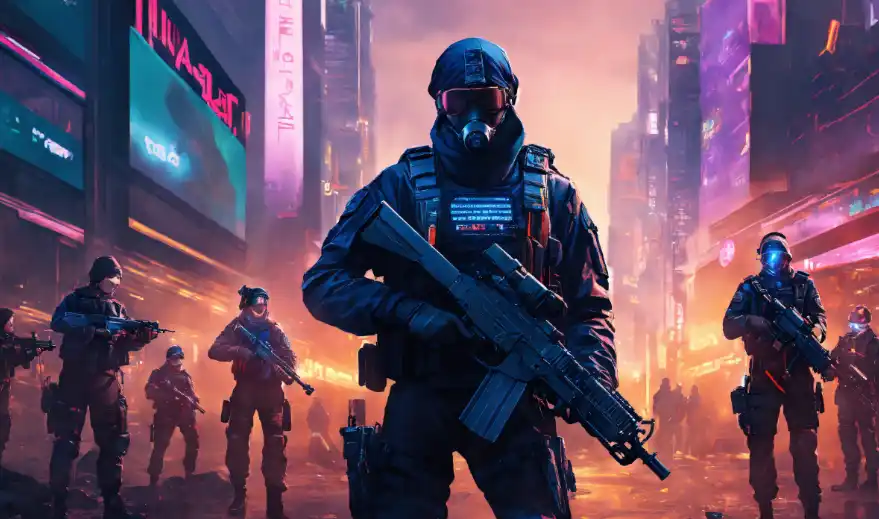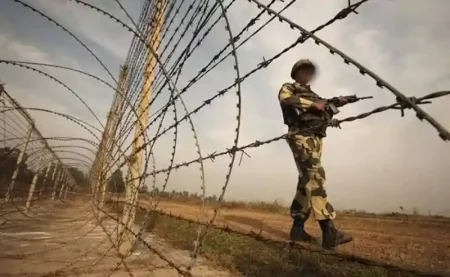It is not enough to bluster that our armed forces be AI-ready without a supply line of indigenous tech to fuel them, writes Satyen K. Bordoloi
Operation Sindoor, as a retaliation against the Pahalgam terror attack, woke India up to the need for machine learning (ML) integration into our command and control, on-ground war, logistics and decision-making. The result has been an Indian army AI roadmap announced recently that envisions integration of battlefield innovations in Artificial Intelligence (AI), ML and Big Data across our operational theatres, logistics and decision making by 2026-27.
This is a commendable move by the government. The only problem: we lack indigenous technology and its supply lines that can match those abroad and also be free of foreign interference.

INDIAN ARMY ROADMAP
On July 4, at a FICCI conference titled “New Age Military Technologies: Industry Capabilities & Way Forward”, Lt Gen Amardeep Singh Aujla, Master General Sustenance of the Indian Army, unveiled a comprehensive modernization roadmap aimed at transforming our defense capabilities across multiple domains including different advanced weapons system and also the use of AI, ML, blockchain, and the Internet of Things (IoT).
A few weeks later, the Indian Express reported details: “battlefield awareness using AI tools that can process large volumes of information quickly. These include text summarisers built on Large Language Models (LLMs) to scan and condense long reports, AI-powered chatbots, voice-to-text systems, facial recognition, and tools that can detect unusual patterns or threats. AI will also be used to analyse feeds from drones, satellites, aircraft and ground sensors, and fuse this data in real time to support faster, more informed decision-making.”
AI is also to be used in navigation, surveillance, Open Source Intelligence (OSINT) analysis, adversary capability mapping and running wargame simulations.

All of these are laudable. But India is so dependent on foreign servers, ideas and innovation in each of these fields, that it leaves us vulnerable in an age where the quality of algorithms could determine the outcome of a conflict. Today, and in the near future, using any form of AI in India means that 90% of the computing power required is run on American servers, using Taiwan or Chinese-manufactured chips, with algorithms initially developed in Silicon Valley labs.
This is the paradox of our current predicament in the rapidly evolving theatre of AI in warfare. Despite our comprehensive AI roadmap for 2026-27, and our impressive interception of Pakistani drones and missiles during Operation Sindoor, we as a nation are caught in a foreign technology dependency trap that could prove catastrophic, especially in a prolonged confrontation with our primary adversary: China.

INDIA’S FOREIGN DEPENDENCY TRAP
Our military’s AI capabilities fundamentally rest on foreign foundations. Current estimates suggest that 90% of India’s AI workloads run on overseas cloud servers, primarily managed by American hyperscalers like Amazon Web Services, Microsoft Azure, and Google Cloud. The chips that run them are manufactured primarily in Taiwan and China, with designs originating from American companies like Nvidia.
Even the foundational model on which the current and near future AI capabilities will be based was developed abroad. Even the data processing required to coordinate the multi-layered defence system relies heavily on cloud infrastructure located outside our borders. This dependence can lead to critical issues like higher latency, data sovereignty concerns, expensive costs and strategic vulnerability.
If the undersea cables fueling this data processing across continents are cut, like Russia is said to have recently done in the Baltic Sea, we’ll be rendered vulnerable during a conflict.
So what can we do? While scouting for solutions to this problem, let us look at what our neighbour and our biggest threat, China, has done.

CHINA’S INTEGRATED AI WAR MACHINE
China has built a comprehensive, domestically controlled AI ecosystem specifically designed to support military applications. The People’s Liberation Army (PLA) operates under a doctrine called “intelligentised warfare,” which seamlessly integrates AI across all domains of combat. This isn’t just about deploying a few AI-enabled systems; it is a reimagining of military operations where artificial intelligence is the central nervous system of the entire armed forces.
Not just that, China has adopted a system experts call “military-civil fusion” under which civilian technology companies have been systematically integrated into the defence ecosystem. Their tech giants like Baidu, Alibaba, and Tencent aren’t just businesses, but active participants in China’s military AI development.
Baidu’s autonomous vehicle technology feeds directly into unmanned military systems. Alibaba’s cloud computing infrastructure supports PLA operations. Tencent’s gaming algorithms are adapted for combat simulations and strategic planning.

All this has been made possible by the staggering scale of China’s military AI investment. According to Georgetown University’s Centre for Security and Emerging Technology, the PLA spends between $1.6 billion and $2.7 billion annually on AI research and procurement, nearly matching the U.S. military’s AI spending. However, unlike the American model that relies heavily on private sector innovation, which may or may not align with military needs, China’s approach is to ensure every technological advancement serves dual purposes.
Chinese military robotics capabilities exemplify this integrated approach. The PLA has deployed “mechanical yaks”: quadruped robots capable of carrying 160 kilograms across challenging terrain. Swarm drone technologies allow coordinated attacks by hundreds of autonomous aircraft. Most significantly, China has developed what it calls an “army of none” by converting thousands of obsolete fighter jets into AI-controlled unmanned platforms that can overwhelm enemy defences through sheer numbers while avoiding human casualties.
Perhaps most concerning for India is China’s support for Pakistan’s Centre of Artificial Intelligence and Computing (CENTAIC), established in 2020. This collaboration became evident during Operation Sindoor, when Pakistan appeared to receive real-time satellite intelligence and AI-backed targeting support from Chinese systems.
The revelation that Chinese researchers used Meta’s open-source Llama model to develop military-specific AI tools like “ChatBIT” shows how easily and effectively China converts civilian AI advances into military capabilities.

INDIA’S SILICON VALLEY PARADOX
India is a land of tech and AI giants. Except that to realise their potential, they have to go to Silicon Valley. Indian origin executives run the world’s greatest tech companies: Sundar Pichai at Alphabet/Google, Satya Nadella at Microsoft, Shantanu Narayen at Adobe, and Arvind Krishna at IBM. They also pioneer AI technology, such as Aravind Srinivas, CEO & Co-founder, Perplexity AI, or Anima Anandkumar, Director of AI Research, NVIDIA, and Ashok Elluswamy, Director, Tesla Autopilot, among many others.
Indian engineers and researchers form the backbone of Silicon Valley’s AI revolution, contributing disproportionately to breakthrough innovations in machine learning, natural language processing, and computer vision, like Ashish Vaswani and Niki Parmar, two of the eight researchers whose paper, Attention Is All You Need, heralded the age of LLMs.
People call it brain drain. I call it the consequence of India’s chronic underinvestment in AI infrastructure, the absence of visionary policy, the scarcity of high-risk funding, and a culture that undervalues deep tech ambition. It’s not just a lack of opportunity — it’s a lack of imagination, appreciation, and institutional courage which both our government and academia have not been able to provide.
This, in the age of AI warfare, is one of India’s greatest strategic vulnerabilities. The very people who could be building our own AI capabilities are doing so for nations from whom India has to purchase, license or adapt.
Despite being the world’s largest democracy with over 4000 startups in broader tech and AI-adjacent categories, India has failed to produce a globally competitive LLMs or foundational AI system. The government’s recent announcement of plans to develop an indigenous AI model using 18,000+ GPUs is welcome. Still, it is a case of too little too late, which means the timeline of 8-10 months Union Minister Ashwini Vaishnaw says India requires to develop our indigenous foundational AI model, is optimistic at best considering the complexity of the challenge.
Now carry this over to defence AI developments, which require specialised knowledge combining AI expertise along with the understanding of military operations, threat scenarios and strategic requirements, and you’ll see how acute the problem is for India. And let’s not forget that our robotics infrastructure or development is in the dumps as well, which means for India, a war with China will be akin to the cliché of bringing a knife to a gun fight.
Yes, India did establish the Defence AI Council (DAIC) and Defence AI Project Agency (DAIPA) in 2019. But its work has been hampered by what ails the AI ecosystem in general in India: bureaucratic inefficiencies and red tape, and specific to the forces: inter-service silos. Indian Army, Navy and Air Force are working fragmented on their independent AI initiatives with little or limited coordination or cooperation when what we need is integrated AI capabilities that could provide decisive advantages in multi-domain warfare.
The defence sector’s complex procurement processes, extended timelines, and bureaucratic hurdles also mean that it discourages private investment in military AI research, keeping our IT giants like TCS, Wipro and Infosys away from participating in India’s defence AI development. This has led to a chicken-and-egg problem: private companies avoid defence AI investment due to uncertainty, while the government struggles to develop indigenous capabilities without private sector innovation.
Despite having one of the world’s largest pools of AI talent, India lacks the fundamental infrastructure to support advanced AI research and development at scale. AI hardware currently needs to be imported from US-headquartered AI value chain players. And this is across compute, networking, memory, connectivity, and storage datacenter infrastructure components.
Working with an AI company last year, I realized how acute the problem is because such infrastructure dependency creates multiple vulnerabilities by exposing us to supply chain disruptions during geopolitical tensions, subjecting our AI development to foreign jurisdiction potentially compromising sensitive military applications and creating a cost disadvantage where our companies pay premium rates for AI computing resources that others don’t need to.
The IndiaAI Mission, with a ₹10,372 crore budget, aims to address these gaps by building a national AI compute grid with 18,000 high-end GPUs and establishing AI-focused data centres across the country. However, these efforts remain heavily dependent on foreign suppliers for critical components, potentially perpetuating the dependency rather than resolving it.
The path forward for India is clear, even if challenging. We have the human capital, financial wealth, and strategic need to build our AI capabilities that at least match those of our adversaries and their helpers. The point is: will our national leadership prioritise long-term sovereignty over short-term convenience?
The Indian Army’s announcement of its AI roadmap for 2026-27 is an essential first step. But true success will require transforming us from a consumer of AI technology into its creator and controller of algorithms that will determine the fate of future conflicts. For a nation that wants to be a global power, this is not a choice but a necessity.
The biggest question then is: will we act before it is too late?
In case you missed:
- GoI afraid of using foreign GenAI in absence of Indian ones? Here’s how they still can
- Digital Siachen: Why India’s War With Pakistan Could Begin on Your Smartphone
- OpenAI, Google, Microsoft: Why are AI Giants Suddenly Giving India Free AI Subscriptions?
- Digital Siachen: How India’s Cyber Warriors Thwarted Pakistan’s 1.5 Million Cyber Onslaught
- How Can Indian AI Startups Access Global VC Funds?
- How India Can Effectively Fight Trump’s Tariffs With AI
- Deep Impact: How Cheap AI like DeepSeek Could Upend Capitalism
- Why Elon Musk is Jealous of India’s UPI (And Why It’s Terrifyingly Fragile)
- Great quantum poker: Who’s bluffing, and who is holding the aces?
- From Generics to Genius: The AI Revolution Reshaping Indian Pharma











1 Comment
This is a very comprehensive article .I must congratulate Mr Satyen for his comprehensive understanding of the subject and linking the same to the requirements of Indian Military .
It’s a wake up call . Our dependence on big tech companies should be minimal asap .
Well done Satyen 👏